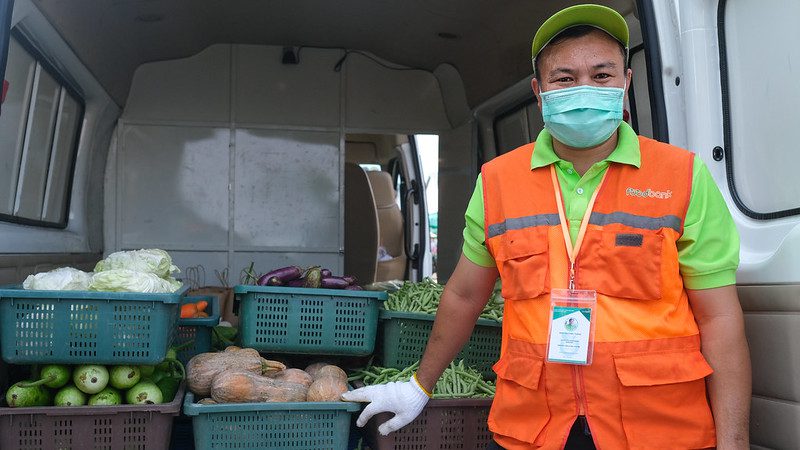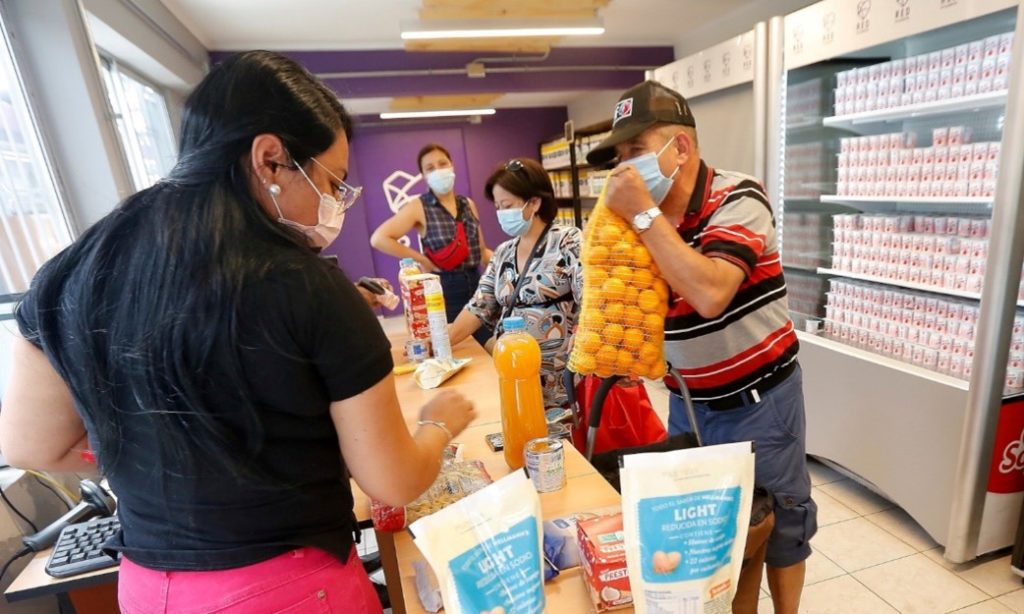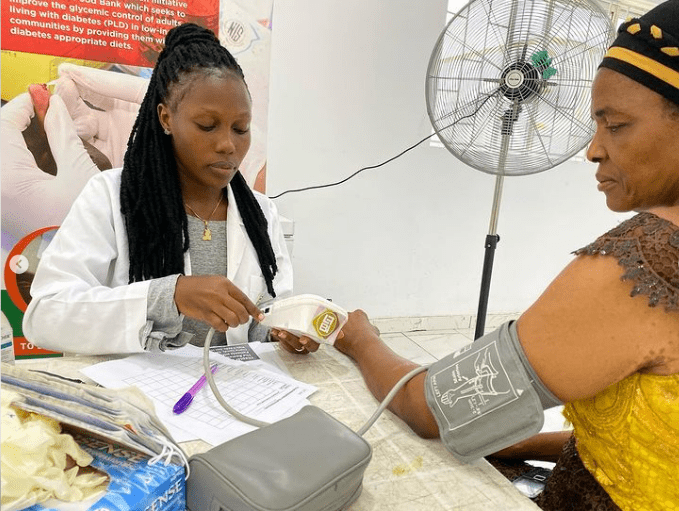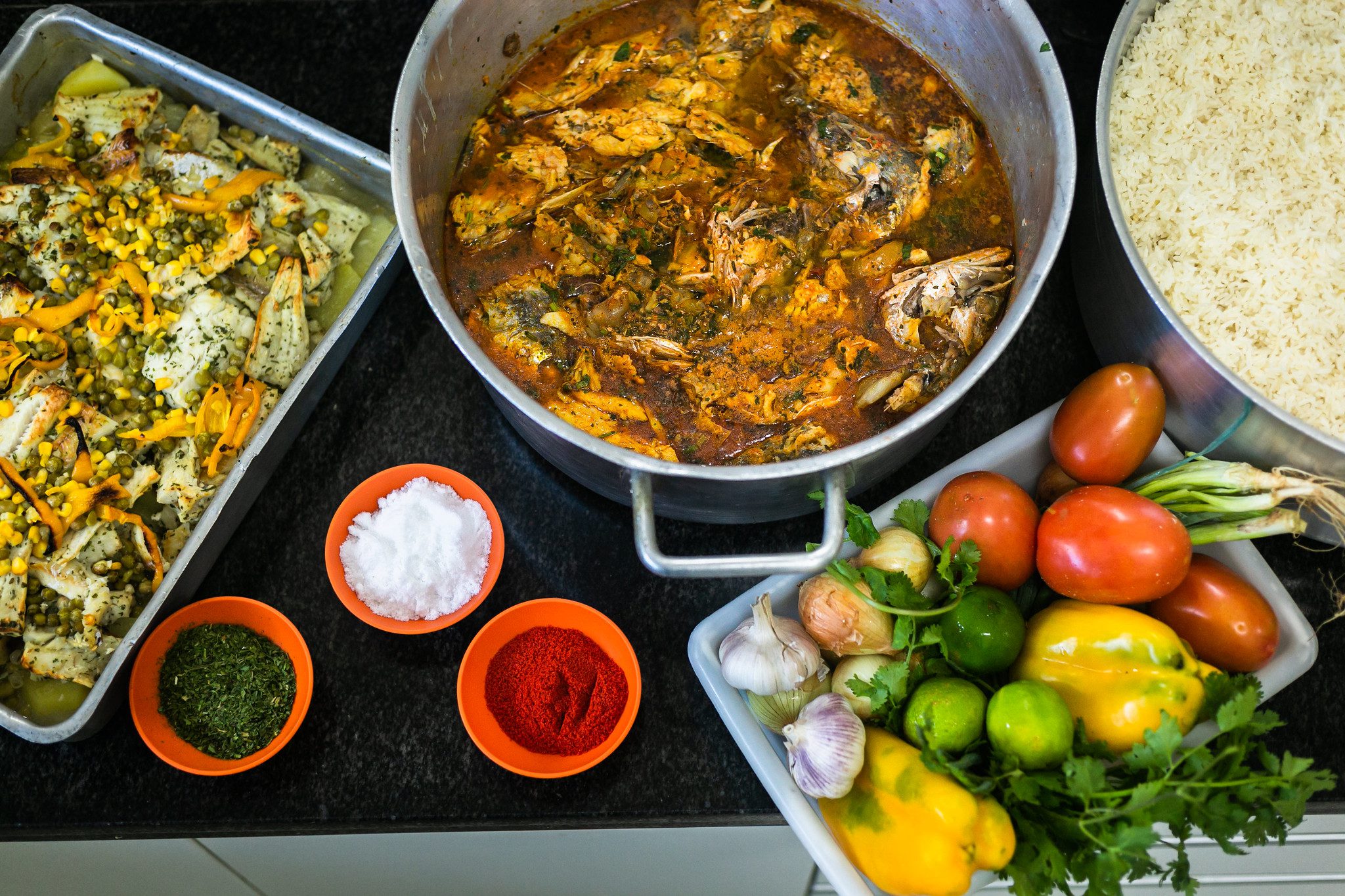A nutritious diet lays the foundation for a healthy and productive life. Unfortunately, for many people around the world, healthy food is out of reach—and the lingering effects of the pandemic and rising food prices are only making it less accessible. To address this issue, as food bank members of The Global FoodBanking Network (GFN) provide critical food assistance, they prioritize nutrition for their communities.
GFN’s annual survey of the food banks in our Network found that nearly two-thirds of member food banks track whether the food and beverages they distribute are nutritious. Because food banks are uniquely placed in their understanding of local communities, members define “nutritious” according to their country’s standards, academic guidance, or other locally relevant classifications. Across the Network, 68 percent of all food and beverages distributed are defined as nutritious by food bank staff experts.
Food banks recover nutritious food from a variety of sources, including farmers, producers, and wholesalers. For example, Banco de Alimentos Perú partners with many commercial growers like La Calera and Safco that supply large donations of oranges, grapes, and other fruit. Food Banking Kenya has developed strong relationships with small-scale vegetable farmers in Nyandarua, a county in central Kenya. And Foodbank Việt Nam receives approximately two tons of surplus vegetables, fruit, protein, and dried foods per week from Thủ Đức Wholesale Market in Ho Chi Minh City.
Our annual survey found that, on average, 30 percent of the products distributed by food banks are fruits and vegetables and 18 percent are grains. Across the Network, the total amount of those two categories distributed amounted to nearly 250 million kilograms in 2021.

It’s important that people should have the ability to decide what foods are the best for their own health and wellbeing. Indeed, two-thirds of food banks report that they collect data about demand for different food types and then use this information to inform product sourcing efforts and improve the diversity of products they offer. In fact, many food banks have developed methods to support people’s ability to select foods. For example, Red de Alimentos in Chile launched Despensa Social for older adults, which enables recipients to choose 10 kilograms of fruits, vegetables, yogurt, beans, and personal hygiene products, per visit. Similarly, Korea Foodbank’s 130 Food Markets carry a wide variety of fresh, dry, and frozen foods.

To support longer-term resilience and community health, food bank nutrition programs equip people with the knowledge and skills to make healthy and informed food choices. Two-thirds of food banks employ a staff nutritionist whose primary role is training and education. From workshops on healthy diets and specialized support for people with specific needs to home gardening programs and cooking demonstrations, GFN member food banks offer nutrition education in a variety of ways.
For example, in Nigeria, Lagos Food Bank Initiative’s Nutrition Intervention for Diabetes Self-Management program teaches recipients how to manage blood sugar levels and mitigate related complications, in addition to providing healthy food. Mesa Brasil Sesc’s Healthy Meal program for children in daycare centers encourages healthy eating habits which have helped reduce child obesity. And Foodbank Western Australia’s four-week Food Sensations nutrition education program has improved food literacy and healthy eating habits in adults.

Food banks provide much more to their communities than food assistance alone. As evidenced by GFN’s annual Network survey, nutrition is a key component of their work and critical to our broader community resilience efforts. And over the next few years, GFN’s forthcoming nutrition strategy will identify specific ways in which our organization can support food banks in achieving their nutrition goals. We look forward to supporting nutrition and greater food access alongside member food banks, in ways that are culturally sensitive and responsive to the needs of local communities.
